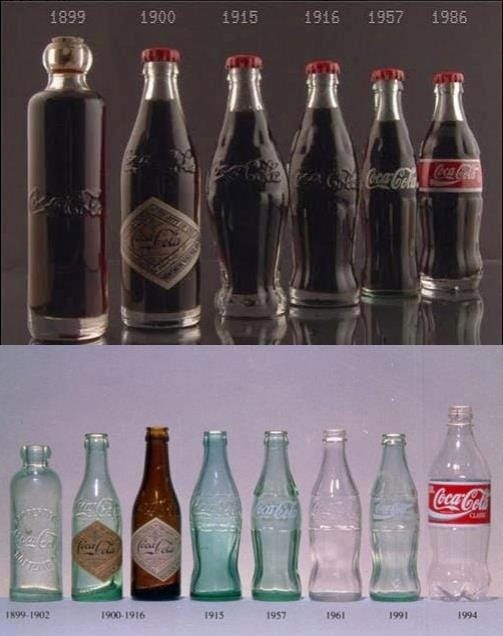Coca-Cola: Building a Timeless Brand Through Emotion and Connection
A Branding Case Study on the Effectiveness of Shaping Users Perception.
Coca-Cola isn’t just one of the most recognized brands in the world—it’s also one of the most beloved. Their brand success isn’t based solely on their product (after all, there are many soft drinks out there), but on their ability to create deep, emotional connections with consumers. Here’s how they’ve consistently shaped user perception:
1. Brand Consistency and Identity 🎨
One of the key strengths of Coca-Cola’s branding is its consistency. Since its creation in the late 1800s, the brand has maintained its iconic red and white color scheme and the flowing cursive logo. This consistency over more than a century has created a sense of trust and familiarity across generations. Consumers around the world can instantly recognize the brand, whether they’re in New York, Nairobi, or New Delhi.
Taglines that resonate: Coca-Cola’s taglines have always centered around positive emotions—“Open Happiness,” “Taste the Feeling,” and “The Pause that Refreshes.” These slogans transcend the product itself, focusing on what Coca-Cola wants people to feel when they drink it—joy, refreshment, and connection.
2. Emotion-Driven Marketing Campaigns ❤️
Coca-Cola’s marketing strategy is built around emotional branding. They don’t focus on selling a beverage; they focus on selling an experience or a feeling. Here’s how:
Happiness and Togetherness: Their iconic ads, like the “I’d Like to Buy the World a Coke” commercial, promote themes of unity, friendship, and happiness. Coca-Cola positions itself as a product that brings people together, from family dinners to international events.
The “Share a Coke” Campaign: One of Coca-Cola’s most successful modern campaigns involved printing people’s names on bottles. This simple personalization made Coca-Cola a more intimate, relatable product. People loved finding a bottle with their name or gifting one to a friend. The campaign boosted sales and engaged consumers emotionally, creating a personal connection with the brand.
Seasonal Campaigns: The Coca-Cola Christmas Connection 🎄: Coca-Cola has an enduring connection with the holiday season. Their Christmas advertisements featuring Santa Claus are iconic and have cemented Coca-Cola as part of the holiday spirit. The brand created an image of Santa Claus that is now deeply embedded in popular culture—jolly, red-suited, and cheerful, aligning perfectly with Coca-Cola’s values of happiness and joy. This kind of cultural impact allows the brand to remain relevant and cherished during key festive seasons.
3. Cultural Adaptability and Relevance 🌍
Coca-Cola has managed to globalize its brand while maintaining local relevance. They adapt their campaigns to suit different cultures and demographics, making the brand feel personal and relevant to consumers in every part of the world.
Localized Campaigns: For instance, in some countries, Coca-Cola releases special ads during festivals like Diwali in India or Chinese New Year. The messaging is tweaked to align with cultural values, yet still retains the core brand message of togetherness and joy.
Sporting Event Sponsorships: Coca-Cola has heavily invested in global events like the Olympics and the FIFA World Cup. By aligning with such emotionally charged, unifying events, Coca-Cola connects with people’s love for sports, national pride, and shared celebrations. This association reinforces their brand as a staple in moments of joy and collective experience.
4. Timeless Storytelling 🎬
Coca-Cola’s ads are a lesson in emotional storytelling. Rather than focusing on the product’s features or taste, they craft narratives around positive human experiences—family gatherings, friendships, celebrations, and joyful moments.
Iconic Ads: The 1971 “Hilltop” ad where people from different cultures and countries sang “I’d like to buy the world a Coke” is still one of the most famous commercials of all time. It wasn’t about selling soda but about a message of unity and peace. This ad was so powerful that it was re-released during key moments in history, including its appearance in the final episode of Mad Men.
User-Generated Stories: Coca-Cola has embraced digital storytelling by encouraging user-generated content. For example, people who shared their #ShareaCoke moments on social media contributed to a larger narrative, adding authenticity and emotional depth to Coca-Cola’s campaigns. This strategy turned consumers into brand ambassadors, amplifying Coca-Cola’s emotional branding efforts.
5. Creating a Lifestyle Brand 🏖️
Coca-Cola has transcended the idea of being just a drink; they’ve become a lifestyle brand. Their branding makes Coca-Cola synonymous with celebration, refreshment, and happiness. Whether at a family BBQ, a party, or a holiday, Coca-Cola wants to be the beverage that’s part of your life’s most enjoyable moments.
6. Sustainability and Social Responsibility 🌱
In recent years, Coca-Cola has also tried to evolve its brand in line with the growing demand for social responsibility. While their product hasn’t changed, Coca-Cola has focused on sustainability initiatives, such as promoting recycling through their “World Without Waste” campaign and aiming to collect and recycle every bottle they sell by 2030. These efforts position the brand as not just a product of joy but also one that cares about the environment and future generations.
Key Takeaway: Coca-Cola’s Branding Mastery
Coca-Cola’s success in branding can be attributed to its ability to consistently convey the same core message—happiness, togetherness, and refreshment—while adapting to the times. By focusing on emotional connection rather than the product itself, they’ve built a brand that transcends generations and borders.
Coca-Cola’s approach is a lesson in the power of emotional storytelling, cultural adaptability, and timeless consistency in creating a brand that doesn’t just sell products but connects deeply with consumers’ emotions.

